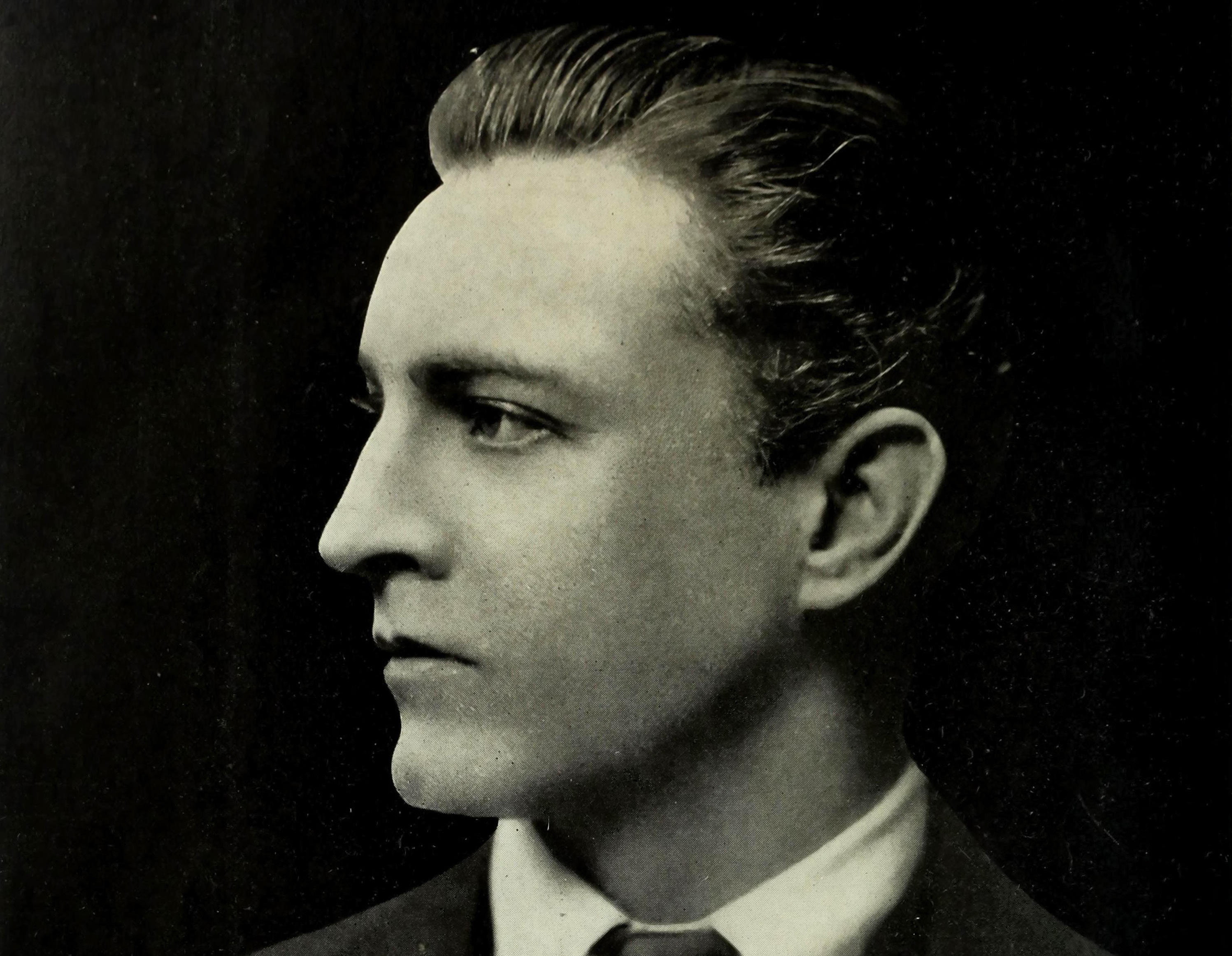【Watch Midhunter】
Ham on Watch MidhunterRye
Our Daily Correspondent

John Barrymore in 1920.
Some years ago, a friend who works in real estate let me see the Greenwich Village apartment that had belonged to John Barrymore; I had read about it and was thrilled to see the interior. Today its rent is beyond the reach of most mortals, but even when Barrymore moved there, in 1917, the building had a distinct bohemian chic—it had been remodeled by the architect Josephine Wright Chapman. Still, the nineteenth-century row house was modest by matinee-idol standards. Barrymore took the place while he was appearing on Broadway in Hamlet. He was not yet considered tragic or ridiculous or a parody of himself, though he was on the way.
To the modern eye, the light-filled studio with its window seat, skylight, and fireplace are magical enough, even with a tiny bedroom and no real kitchen—indeed, this sort of adds to the charm. Up a narrow ladder, on the roof, was a hut that Barrymore had built: a single weatherproofed room with a vaulted ceiling. The playwright Paul Rudnick rented the studio in the 1980s, and as he wrote in the New Yorker, he was “smitten.”
Barrymore had remodeled the apartment as a Gothic retreat, christening it the Alchemist’s Corner. He had installed all the false beams, monastery-inspired ironwork, and stained glass, which made his lair resemble the stage set for an Agatha Christie whodunit in summer stock. The rooftop had been his masterpiece and had at one time included a garden with cedar trees, a slate walkway, and a reflecting pool. Tons of soil had had to be hoisted up by pulley, and eventually caused a collapse. Of Barrymore’s vision, only the cottage remained; he’d likened it to a roost overlooking the spires of Paris.
Living there, Rudnick was inspired to write the play I Hate Hamlet.
The apartment inspired in me the sort of painful longing that any resident of an overpriced city will understand. It’s not just that the studio was charming and magical and located in a beautiful neighborhood and, in its inconvenient way, completely perfect. It wasn’t just that there was a cottage on the roof. It was that, at one point, this was a place where a playwright could afford to live. It was a paean to eccentricity. And this world was gone.
I didn’t want to live there, not really. I mean, the hut has no bathroom—and one can’t imagine the notoriously alcoholic thespian climbing the steep, wooden stairs easily. (On the day we went, it was raining, and the wood was slippery even for the sure-footed.) I like a kitchen, not to mention being able to afford my rent. I just wanted it to be there, quixotic and absurd. I wanted to live in a world where it was. It seemed a terrible truth that anyone who could easily live there would want something more convenient. It made sense that it should be expensive—what could be more precious?—and yet terrible, too.
It all made me feel fiercely protective and angry and sad: filled with the almost physically sickening nostalgic envy that lodges in your gut. You almost want the relief of its obsolescence.
Sadie Stein is contributing editor of The Paris Review, and the Daily’s correspondent.
Search
Categories
Latest Posts
The Florida Man Can’t
2025-06-25 21:23Open AI and Google trained AI models on YouTube videos
2025-06-25 21:22How to watch 'The Greatest Hits': Release date, streaming deals
2025-06-25 20:40Nursing the Nation
2025-06-25 19:34Popular Posts
The Tagorean Impulse
2025-06-25 21:51The beluga whale in a viral image doesn't have legs, it has blubber
2025-06-25 20:19Trivial Pursuits
2025-06-25 19:34Featured Posts
Psychic Healing at the End of History
2025-06-25 20:42Shein achieves record profitability in H1 · TechNode
2025-06-25 19:56Shein achieves record profitability in H1 · TechNode
2025-06-25 19:18What the Doctors Ordered
2025-06-25 19:18Popular Articles
The Un-Election Year
2025-06-25 21:22Best free online courses from MIT
2025-06-25 20:58Chinese automaker GWM launches fuel
2025-06-25 20:14Changan Ford officially takes over Ford Mustang Mach
2025-06-25 20:05Go Down, Cuomo
2025-06-25 19:23Newsletter
Subscribe to our newsletter for the latest updates.
Comments (8186)
Reality Information Network
Nursing the Nation
2025-06-25 21:46Warmth Information Network
FIMI releases Manta VTOL fixed
2025-06-25 20:44Star Information Network
Best outdoor deal: The Solo Stove Bonfire 2.0 is just $174.99 at Target.
2025-06-25 20:38Belief Information Network
'Fallout' review: Video game adaptation is a wild nuclear Western
2025-06-25 20:02Ideal Information Network
Class Carpetbagger
2025-06-25 19:46